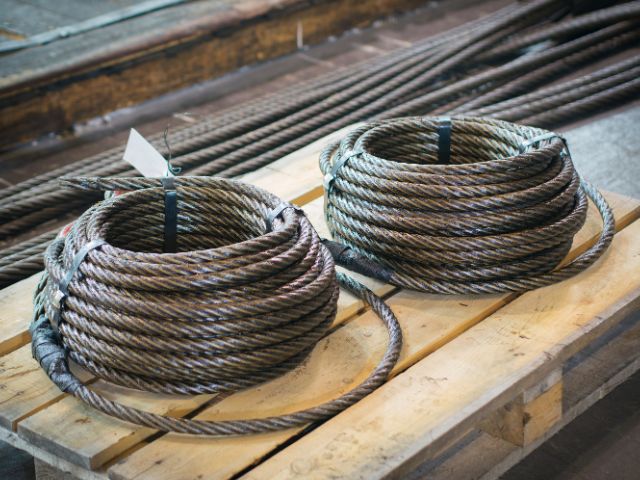
Wire ropes are essential for lifting applications across various industries, especially construction. As a site manager, you must ensure their condition and safety so your team can stay safe. Here are five important tips for inspecting your wire rope so you can protect your team and get the job done.
Frequency of inspection is a major factor in ensuring the durability of wire ropes. Checking your rope before using it on the job site is a good way to prevent wire rope damage and failure.
Your inspections should not end there! Look at the wire rope again after use to guarantee a secure working environment and prevent significant downtime from accidents caused by faulty rigging equipment.
During your inspection, look for distortions that may cause the rope to lose its structural integrity or strength. Kinks, bird caging, or other forms of deformation indicate stress or improper handling of the wire rope. When you encounter these defects, consult your wire rope supplier for further action.
Wire rope usually experiences abrasions due to contact with other surfaces or objects during operation. As you inspect your rope, be on the lookout for damage, such as wire breaks, crushed sections, or flattened areas.
In addition, keep an eye out for corrosion that can weaken the rope’s structure, contribute to wire breaks, and decrease its load capacity.
Another important tip for inspecting your wire rope is to wipe it with a cloth. This technique can reveal loose wires since they’ll likely get stuck on the cloth. Faulty wires threaten the integrity of the rope. You may find that you can easily fix loose wires, eliminating the need to purchase a replacement rope.
Performing regular checks on the diameter of your wire rope can help you detect signs of excessive wear or elongation. With the help of a caliper, determine whether the rope’s diameter matches its original measurement when you acquired it.
Internal failure, corrosion, or abrasion to the exterior of the rope can reduce the rope’s diameter. Remember that any deviation from the original diameter can compromise the rope’s performance.
When you follow these tips, you can assess the condition of your wire ropes and maintain the performance of your lifting equipment. You can also keep your team safe while extending the life of your equipment.
24World Media does not take any responsibility of the information you see on this page. The content this page contains is from independent third-party content provider. If you have any concerns regarding the content, please free to write us here: contact@24worldmedia.com